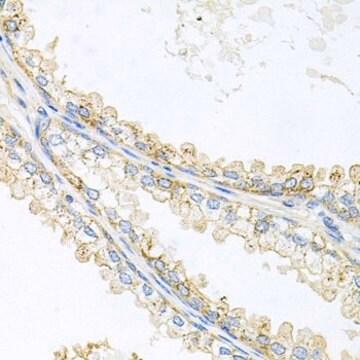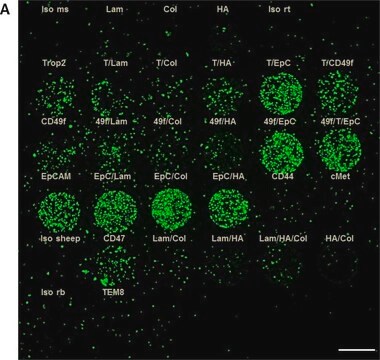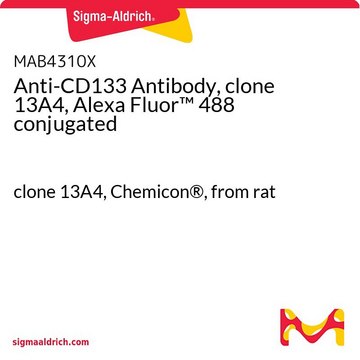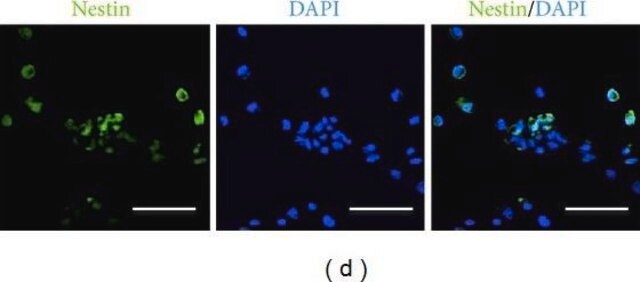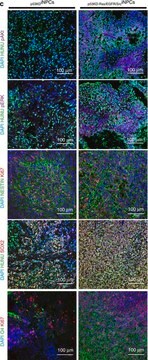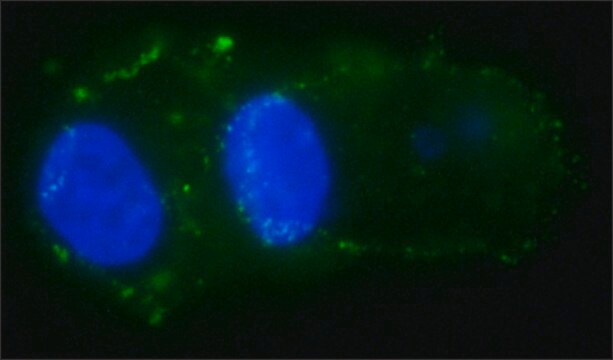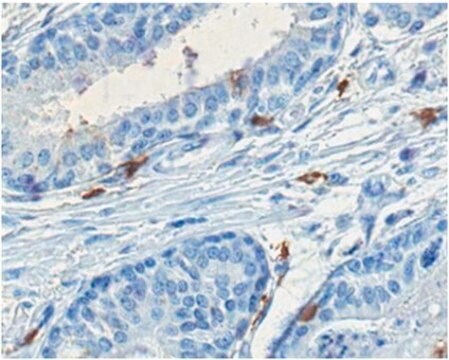MAB4310
Anti-CD133 Antibody, clone 13A4
clone 13A4, Chemicon®, from rat
Sinonimo/i:
Prominin-1, AC133 (human)
About This Item
Prodotti consigliati
Origine biologica
rat
Livello qualitativo
Forma dell’anticorpo
purified immunoglobulin
Tipo di anticorpo
primary antibodies
Clone
13A4, monoclonal
Reattività contro le specie
mouse
Non deve reagire con
chicken, Drosophila, rat
Produttore/marchio commerciale
Chemicon®
tecniche
flow cytometry: suitable
immunohistochemistry: suitable
immunoprecipitation (IP): suitable
western blot: suitable
input
sample type hematopoietic stem cell(s)
sample type neural stem cell(s)
sample type epithelial cells
sample type: mouse embryonic stem cell(s)
sample type mesenchymal stem cell(s)
Isotipo
IgG1κ
Compatibilità
not suitable for immunohistochemistry (Paraffin)
N° accesso NCBI
N° accesso UniProt
Condizioni di spedizione
wet ice
modifica post-traduzionali bersaglio
unmodified
Informazioni sul gene
dog ... Prom1(488816)
human ... PROM1(8842)
mouse ... Prom1(19126)
rat ... Prom1(60357)
Descrizione generale
Specificità
This antibody can be used to isolate murine stem cells from brain and bone marrow.
The 13A4 antibody does not cross react with rat, human, chicken, or Drosophila antigen. The original paper is located at: http://www.pnas.org/cgi/reprint/94/23/12425.pdf
Immunogeno
Applicazioni
Western Blot Analysis: A 1:1000 dilution from a representative lot detected CD133 in monkey kidney lysate.
Stem Cell Research
Neural Stem Cells
Hematopoietic Stem Cells
Descrizione del bersaglio
Stato fisico
Stoccaggio e stabilità
Risultati analitici
Positive Control: Kidney tissue or membranes
Negative Control: Liver tissue or membranes
Altre note
Note legali
Esclusione di responsabilità
Non trovi il prodotto giusto?
Prova il nostro Motore di ricerca dei prodotti.
Codice della classe di stoccaggio
10 - Combustible liquids
Classe di pericolosità dell'acqua (WGK)
WGK 2
Punto d’infiammabilità (°F)
Not applicable
Punto d’infiammabilità (°C)
Not applicable
Certificati d'analisi (COA)
Cerca il Certificati d'analisi (COA) digitando il numero di lotto/batch corrispondente. I numeri di lotto o di batch sono stampati sull'etichetta dei prodotti dopo la parola ‘Lotto’ o ‘Batch’.
Possiedi già questo prodotto?
I documenti relativi ai prodotti acquistati recentemente sono disponibili nell’Archivio dei documenti.
Il team dei nostri ricercatori vanta grande esperienza in tutte le aree della ricerca quali Life Science, scienza dei materiali, sintesi chimica, cromatografia, discipline analitiche, ecc..
Contatta l'Assistenza Tecnica.
